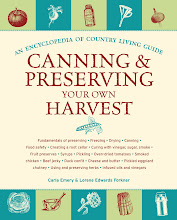I am not terribly concerned about vampire attacks for one simple reason: I love garlic. I put garlic in almost any savory dish from scalloped potatoes to homemade hummus to scrambled eggs. And I’m not talking about a single clove here or there—I go through probably one or two heads of garlic per week. One way to demonstrate the potent and enduring nature of my love for garlic is this: when my dad and I make garlic bread together, we plan ahead and make one loaf bursting with garlicky goodness for ourselves and another designed for normal human beings who prefer the taste of bread with a hint of garlic. Personally, I just can’t get enough of it.
Carla Emery might not be as overly enthusiastic as I am about garlic, but she has some good information about the nature of garlic and its multitude of uses.
“Garlic is a hardy perennial (though usually grown like an annual), the strongest member of the onion family in its sulfide of allyl content — that good stuff that acts as wormer, disinfectant, etc. Shallots, its closest relative, are basically a mild-flavored garlic variety. Like shallots, garlic blooms (pink flowers), but it may or may not make seed depending on the variety and circumstances. Instead garlic is usually propagated by garlic bulbs or “heads” that grow underground (roots go as deep as 2 feet). Each head is made up of a cluster of smaller ones, each called a “clove.” Garlic is a type of onion, a semihardy perennial that, since it’s not damaged by frost or light freezing, can be left in the garden over winter in the Pacific climate — or can be dug up and stored like onions. It’s grown both for the kitchen garden and for commercial sale (it yields a good profit from a very small acreage). Store-bought garlic is usually too dry to plant. Buy a cluster of garlic cloves from a plant nursery or mail-order source.”
A few interesting facts about garlic:
If your garlic tastes bitter when cooked, it means you cooked it over too high a heat. Many cooks throw onions and garlic in the pan together, but garlic takes less time to cook than onion, so make sure to give the onions a few minutes before adding garlic.
There is a cure to garlic breath! Carla Emery suggests chewing on raw parsley or celery leaves.
Garlic can be used as an insect repellent. Carla Emery says, “to fight insects and plant blights, blend several garlic cloves with some water and 1 T. cooking oil or soap emulsion. Strain. Dilute to 1 qt. and spray on. It works very well but must be done very often if you’re in a serious battle situation.”
Garlic is good for you. And that goes beyond adding it to everything you cook (like I do).
“Garlic has genuine antibiotic properties. Garlic juice, lemon juice, and some sweetening mixed in a cup of warm water are good for a sore throat. Garlic juice applied to ant bites helps make the pain go away. For a patient with a chest cold, mix garlic juice and a vapor rub ointment. Smooth that on a square of cloth, cover with another cloth, and place on chest. Garlic is also a diuretic that thins blood and lowers blood pressure. To prevent travelers’ dysentery, eat a clove per day. It has been used to treat patients (humans and animals) who need worming and has no toxic side effects. To worm a large cat, give one crushed clove each month. So whether you use it for medical or culinary reasons, have at it!”
If you’re a fan or garlic or just looking for a tasty power food, try an easy recipe at home!
Quick Garlic Soup
Heat 12 cloves crushed garlic for about 8 minutes in 3 c. rich milk.
Roast Garlic Spread
Cut the tips off a whole head of garlic (don’t peel or separate cloves). Wrap the head in foil; bake at 350 ̊F until cloves get soft and pulpy. Squeeze the mush onto crackers, toast, or good fresh bread. From The Good Food Guide, edited by Lane Morgan (Sasquatch Books, 1992).








No comments:
Post a Comment